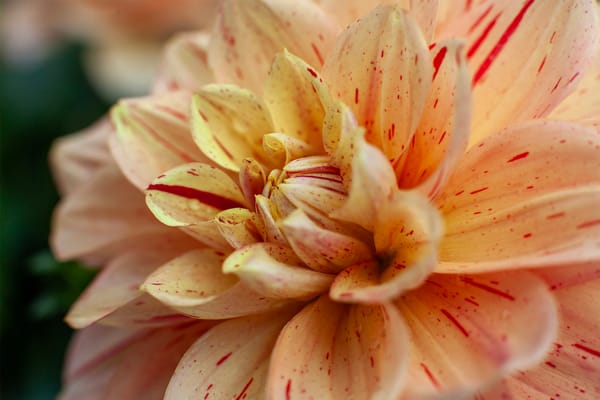In a world where dahlias are beloved for their flamboyant forms, kaleidoscopic colors, and endless variety, it’s easy to forget that every bloom owes its existence to a deep reservoir of horticultural curiosity and experimentation. Beyond the garden beds and show tables, a quiet revolution is taking place—one that’s shaping the future of dahlias through advanced propagation techniques. This is the hidden world where science meets the gardener’s eye: a story of tissue culture, interspecific hybridization, and the captivating chance discovery of genetic sports.
Tissue Culture and Micropropagation: Unlocking the Clean Slate
At the heart of every healthy dahlia is its genetic blueprint, yet even the finest cultivars are vulnerable to virus infection and disease—an ongoing challenge for both breeders and garden enthusiasts. Enter tissue culture: a laboratory-based technique that gives gardeners the opportunity to start fresh with disease-free, vigorous plants.
This method begins with meristem-tip culture—harvesting the tiny, growing points at the shoot tip where viral load is lowest. Under microscopes, skilled technicians carefully dissect these minuscule tissues, which are then grown on nutrient-rich media in sterile, glass-sealed conditions. The result? Tiny, pristine plantlets that are both free from pathogens and primed for rapid multiplication.
The allure of tissue culture isn’t limited to commercial production. For dedicated growers, it opens doors to:
- Virus elimination, particularly of stubborn culprits like Dahlia mosaic virus.
- Bulk propagation of rare or heritage varieties, safeguarding them from extinction.
- Experimental breeding, providing a uniform stock for crossing and trials.
Yet, it’s a method not without its intricacies. Success demands strict laboratory conditions, precise nutrient control, and careful acclimatization. Still, for those willing to master its art, tissue culture offers a new frontier in dahlia propagation—a way to begin again with a clean slate.
Interspecific Hybridization: Breeding Across the Genetic Divide
The desire to push boundaries is as old as gardening itself. Interspecific hybridization—crossing cultivated dahlias with wild relatives—represents one of the boldest ways to bring new vigor, traits, and diversity into the gene pool.
Historically, dahlias are octoploid, carrying eight sets of chromosomes—a complexity that both fascinates and frustrates breeders. Yet despite the challenge, successful crosses have been made between garden varieties and species like Dahlia macdougallii or Dahlia coccinea, confirmed through modern genetic tools like molecular markers and flow cytometry.
Why hybridize?
- To introduce novel traits, like unique flower forms, leaf shapes, or disease resistance.
- To capture wild genetic diversity, countering the risks of inbreeding and narrow gene pools.
- To create entirely new cultivars that blend garden beauty with rugged resilience.
Of course, the process is painstaking. Hybrids may display unpredictable traits—some charming, others problematic. Growth may be indeterminate, flowers irregular, or plants sterile. But therein lies the thrill: each cross is a living experiment, with the potential to reshape the future of dahlias in the garden and the show bench.
Stabilizing Mutated “Sports”: The Art of the Serendipitous Find
Some of the most beloved dahlia varieties began life as spontaneous surprises—mutated 'sports' discovered by growers with a keen eye for difference. Perhaps a bloom appears in an unexpected color, a petal shape shifts, or a growth habit alters on a single stem of a known variety. If you’re lucky enough to spot one, you may have stumbled upon a horticultural treasure.
But turning that accidental marvel into a stable, new variety takes time and skill:
- Vegetative propagation is the first step—taking cuttings from the mutated portion to see if the trait persists.
- Tuber division from sported stems can also preserve the mutation.
- Observation over several seasons confirms whether the change is stable or likely to revert.
It’s a delicate process. Many sports prove fickle, reverting back to their original form after a season or two. Others, however, endure—and in doing so, become the next generation of cherished garden favorites.
The Genetic Frontier: Why This Matters for Gardeners
The work happening in labs, greenhouses, and observant back gardens isn’t just for professional breeders. It shapes the plants available to every gardener, from those seeking classic, reliable bloomers to those eager for the next big thing.
These propagation innovations mean:
- Healthier, virus-free stock that thrives in home gardens.
- Wider choice of colors, forms, and growth habits available in catalogs and garden centers.
- More resilient plants that better withstand pests, diseases, and changing climates.
Moreover, they highlight an important truth: every extraordinary dahlia we admire began with someone’s curiosity and willingness to experiment.
A Closing Reflection: The Dahlia’s Endless Possibility
In many ways, the dahlia embodies the spirit of the curious gardener—never static, always evolving. Whether through the precision of tissue culture, the daring of hybridization, or the happy accident of a chance mutation, the quest to discover, improve, and share dahlias reflects the deep-rooted human desire to nurture beauty and push nature’s boundaries.
For today’s grower, this isn’t just fascinating science. It’s an invitation—to watch closely, experiment boldly, and perhaps even discover the next great garden treasure in your own border.











